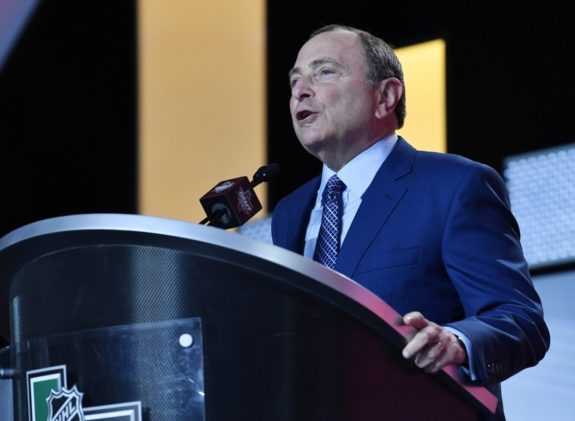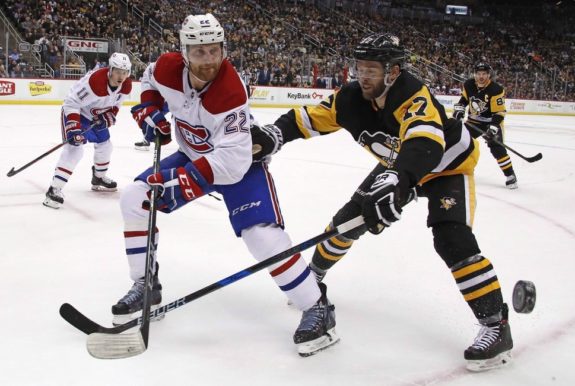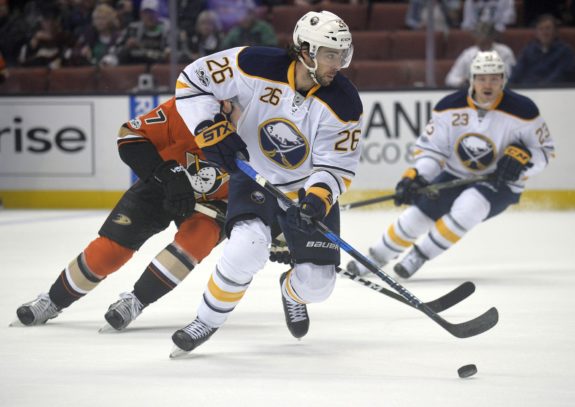It may seem like the last NHL work stoppage was only a couple of years ago, but there’s already potential for another lockout on the horizon. There’s an opt-out clause in the current NHL Collective Bargaining Agreement (CBA) that could put the 2020-21 season on hold.
Though these stoppages turn off fans and result in less money earned by players and franchises alike, some good does come out of these CBA negotiations. The salary cap, shootouts (when they were fun), and increased scoring are the results of CBA negotiations between NHL owners and the NHL Players Association.

For the upcoming CBA talks, here’s an addition to consider: annual amnesty buyouts. If implemented correctly, these bad contract remedies can benefit both the team and player involved in the separation.
Let’s dive into how annual amnesty buyouts could have a positive impact on roster management.
Related: NHL Players Are Planning for a Lockout
What Are Amnesty Buyouts?
During the past two work stoppages, NHL teams have been allowed to buy out players without any sort of salary cap impact. These buyouts were called compliance or amnesty buyouts.
This differs from standard buyouts, which require dead money salary cap hits equal to a percentage of the remaining amount owed to a player. CapFriendly has a detailed explanation on the different buyout categories here.
Annual Amnesty Buyout Benefits
Despite their present AHL status, Karl Alzner and Matt Moulson can be serviceable NHL players—maybe not at the price point their contracts were negotiated to, but depth pieces nonetheless.

So why should they toil in the AHL because a general manager overvalued their services? Annual amnesty buyouts would allow Alzner and Moulson to be cut loose and let them explore the free-agent market. Instead of waiting until their contracts expire, these players would have the opportunity to sign on elsewhere while they’re still young, have more to offer, and have time to re-establish themselves as true NHLers.
On the other side of things, teams can easily rid themselves of a bad decision. Whether their own fault or that of a previous regime, there would be a quick remedy available. If a player isn’t holding up their end of the bargain, then the team can move on without major salary cap repercussions that could handcuff the team further down the road.
How Annual Amnesty Buyouts Would Work
There are a few conditions that need to be set so teams don’t abuse this new privilege.
First, only one amnesty buyout would be permitted per year, with the window to do so taking place between the NHL Draft and the start of the free agency negotiation period. Buyouts cannot be completed during the NHL season and players cannot re-sign with their previous team after being bought out. Injured players cannot be bought out either.

Additionally, bought-out players would be owed their full salary over the remaining duration of their originally negotiated contract. This would count as dead money against a team’s payroll, but not part of the salary cap, like the general manager or coach’s salary.
Finally, so big market teams don’t take advantage of this feature, teams may only buy out a maximum of 10 percent of the next year’s cap worth of salaries. If these buyouts were implemented prior to the 2018-19 NHL season, teams could only have $7.95 million on the books for amnesty buyouts. That number would jump to $8.3 million for the 2019-20 season, per commissioner Gary Bettman’s recent comments.
Example: Detroit Red Wings
For the sake of this example, let’s say that annual amnesty buyouts were legalized prior to the 2018-19 season and the Detroit Red Wings acted on the new rule by buying out Danny DeKeyser.
| Season |
2018-19 |
2019-20 |
2020-21 |
2021-22 |
| Buyout Limit |
$7,950,000 |
$8,300,000 |
$8,550,000* |
$8,800,000* |
| Danny DeKeyser |
$5,000,000 |
$5,000,000 |
$5,000,000 |
$5,000,000 |
| Remaining Buyout Space |
$2,950,000** |
$3,300,000 |
$3,550,000 |
$3,800,000 |
*Projections for the 2020-21 and 2021-22 salary cap upper limits/allotted buyout limit.
**Only one player can be bought out per year, so the remaining buyout space for the 2018-19 season is irrelevant.
Now, once the 2018-19 NHL season wraps up, what if the Red Wings want to buy out another player ahead of the 2019-20 campaign? They would only have $3,300,000 of buyout space to do so, meaning Darren Helm ($3.85 million) and Justin Abdelkader ($4.25 million) could not be jettisoned in this manner. Jonathan Bernier ($3 million) could, though. How would that work?
Related: Red Wings, Seattle Expansion & Potential Lockout
| Season |
2019-20 |
2020-21 |
2021-22 |
| Buyout Limit |
$8,300,000 |
$8,550,000 |
$8,800,000 |
| Danny DeKeyser |
$5,000,000 |
$5,000,000 |
$5,000,000 |
| Jonathan Bernier |
$3,000,000 |
$3,000,000 |
— |
| Remaining Buyout Space |
$300,000 |
$550,000 |
$3,800,000 |
With DeKeyser and Bernier bought out, the Red Wings don’t have a lot of room to buy out additional players. They do, however, have an extra $8 million in cap space to work with for the 2019-20 and 2020-21 seasons.
Final Word
Today, NHL teams just have too much dead money impacting the salary cap. Moulson alone is costing the Buffalo Sabres $3.975 million this season, despite playing the AHL.
If annual amnesty buyouts were permitted, teams would have increased flexibility with the salary cap and impacted players would be allowed to reach free agency sooner, while still earning their previously negotiated salary. With more money available to go around, player salaries could rise further. Teams could also spend more on talent, which would allow for a stronger roster and more competitive games.